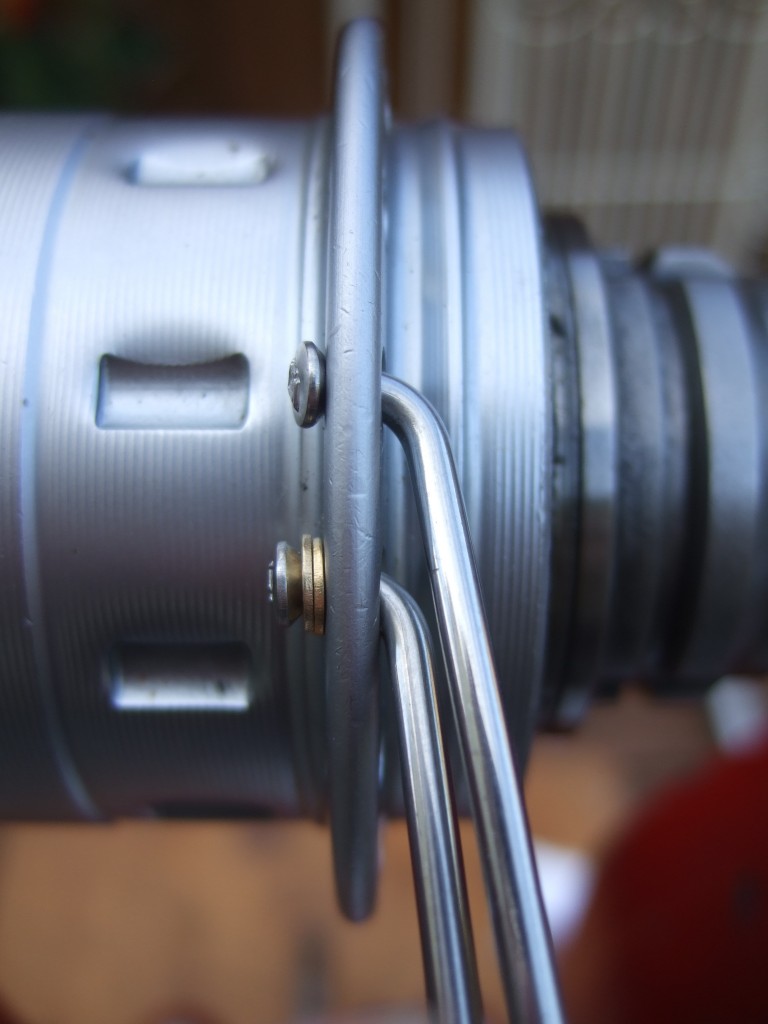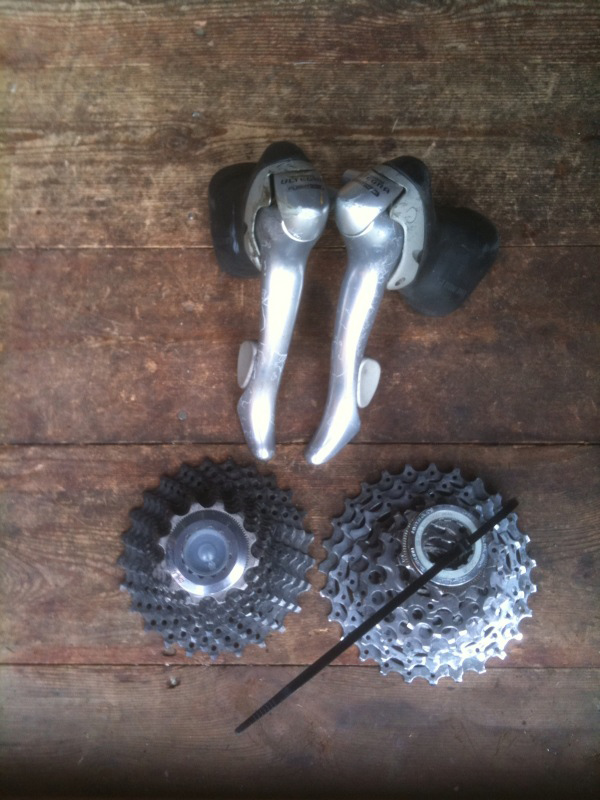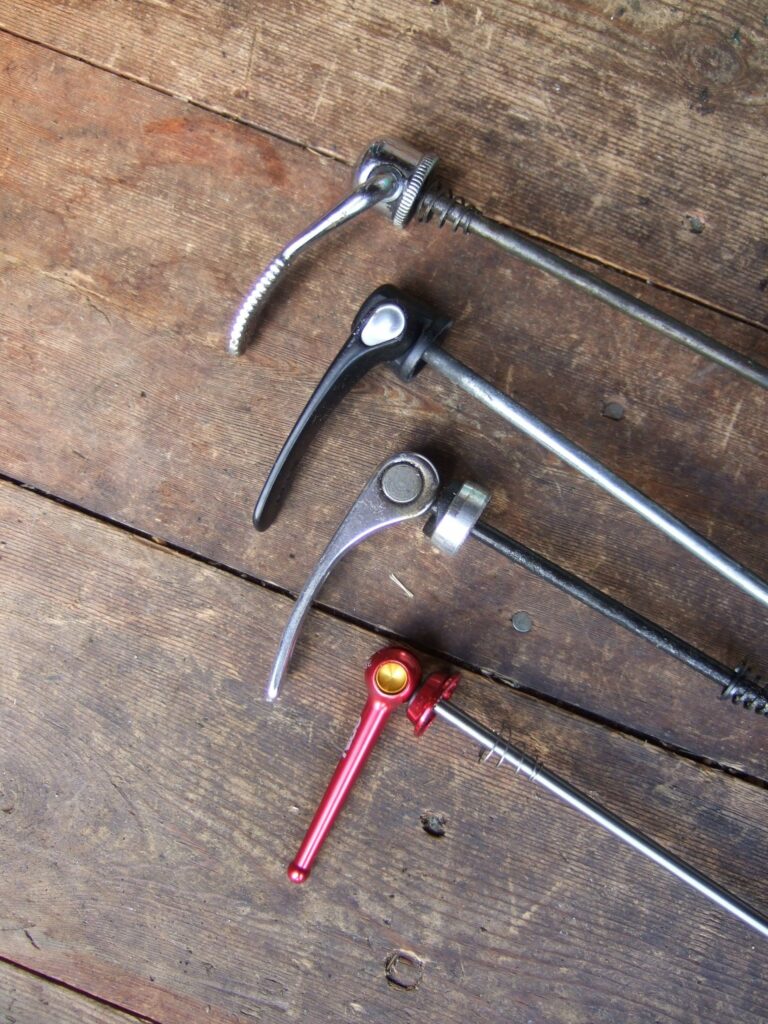
A bit of a digression this week while RCUK waits for the black DT Competition spokes specified for the winter wheelbuild to turn up. We should have stuck with the plain old silver finish…
As mentioned in part one, the featured pair is not the only subject of the series; other builds are taking place and may be mentioned if they have some feature worthy of note. One such is the rear wheel for the Punisher, which recently needed a rebuild after breaking a spoke. The wheel was originally built in 2009 and broke the spoke shortly after my autmn tour of that year, for which it was used.
The breakage came as no surprise, for when I built the wheel I was obliged to lace it two-cross if I wished to use DT Alpine III spokes, which are triple-butted and have a meaty 2.34mm section at the hub end. At the time they were in short supply and not available in the correct length for three-cross.
Although better than radial, two-cross lacing offers the spokes less of a tangent pulling effect on the hub than three-cross. Each power stroke through the pedals tries to rotate the hub relative to the rim, the spokes keeping the two components in position relative to each other. Two-cross lacing allows a slight movement between spoke and flange, which is bad.
The hub, SRAM’s venerated T3, posed a further problem; the barrel and flanges are steel and the latter, not needing much material for strength, are thinner than the flanges found on aluminium hubs. The bend on most current high-quality spokes is shaped to suit fatter flanges and such a spoke fitted to a steel flange will leave a length of bend unsupported on the side away from the head. This will flex during use and will break very quickly.
These two problems were compounded by the fact that the steel flange fretted away at the spokes, as it moved, in a way that an aluminium one would not. When the spoke broke, rather than replace it I abandoned the wheel since all the others would be in the same state.
The solution to the thin flange problem is to fit brass washers. They go between the head and flange, moving the head away from the flange and bringing the bend up against it. The result, if done properly, is to eliminate the unsupported section of spoke and eliminate flex. It may be necessary to use two or three washers. Note that it is still the spoke that resists tension; the washers are simply compressed against the inside of the flange.
The rebuild has replaced the two-cross lacing pattern with spokes crossing three times. I’ll be keeping an eye on their durability to see how it compares.
DT Swiss Proline spoke washers are available sized to fit either 12g and 13g or 14g and 15g spokes and cost £26.99 per bag of 1,000.





